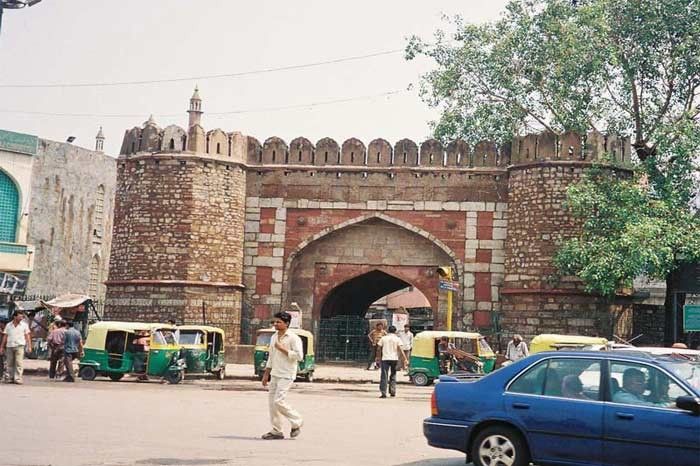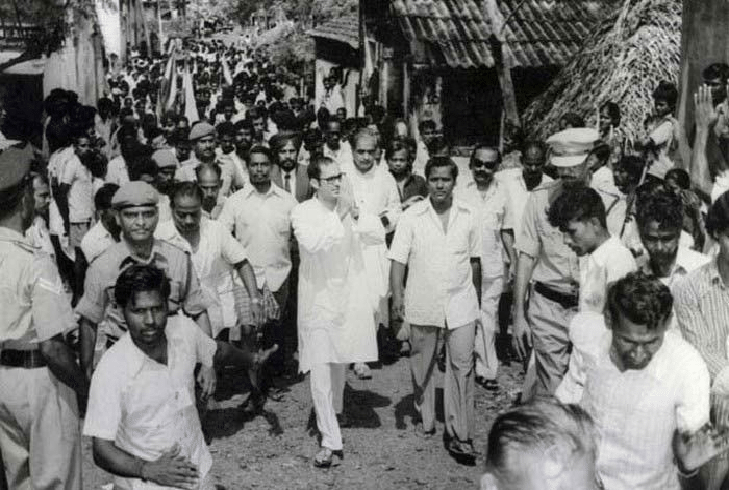
The Turkman Gate
Beautification drive ahead of foreign leaders’ visits has been a routine exercise in India. It dates back to even before Independence. However, the news that the Ahmedabad Municipal Corporation is building a wall allegedly to mask a slum along a route of US President Donald Trump hit the headlines. Pro-Congress media held it up as an object of ridicule, celebrating it to such an extent that international media could have a field day with the story.
For the Westernised scholars, slum was a Third World phenomenon. According to many social scientists, most of the slums were created in India during British rule, mainly because of segregation imposed by the colonialists. For example, Dharavi slum of Mumbai –one of the largest slums in India, was early a village referred to as Koliwadas. In the book ‘Slums of India’, Dr Neela Ganguly writes, “In 1887, the British colonial government expelled all tanneries, other noxious industry and poor natives who worked in the peninsular part of the city and colonial housing area, to what was back then the northern fringe of the city – a settlement now called Dharavi.”
Successive Congress governments’ exclusionary and unbalanced urbanisation programmes, which were modelled on the Nehruvian development paradigm, further contributed to this ‘segregation’, and fuelled migration of people from rural India to the urban areas. Huge refugee influxes and illegal migrations are also to be reckoned with.
Perhaps, Narendra Modi’s Government was the only regime that took a genuine interest in the uplift of slum dwellers that amount to 170 million. Prime Minister Narendra Modi had put forward a project seeking to replace slums with 20 million homes. If implemented right, the plan could usher in a permanent solution to this lasting development problem concerning million of the deprived population of the country.
The Turkman Gate Massacre: Congress model of ‘beautification of slums’
When BJP is accused of building walls to ‘cover-up’ slums from the guests’ eyes, a question crops up: how the Congress managed to deal with this dilemma? The Turkman Gate incident is a classic example of the grand old party’s sympathy for the slum-dwellers and love for Muslim minorities. Like many other genocides perpetrated by the Congress, the Turkman Gate incident which was staged during Emergency also remains as a much-forgotten episode of history.
Delhi’s Turkman Gate was built in 1658 and derives its name from the grave of Sufi Saint Hazrat Shah Turkman Bayabani, which resides east of the gate. The walled city was a Muslim stronghold, a place which the Congress chose to experiment its infamous sterilisation campaign.

Sanjay Gandhi inspecting a slum
The slums surrounding the heart of Delhi had been a persistent headache for the then Congress government as it ‘showed the country’s capital city in poor light’ before foreigners and VVIPs. That’s how Turkman Gate topped Sanjay Gandhi’s list of the areas to be beautified.
Congress leader and son of the then Prime Minister Indira Gandhi, along with his close aide Ruksana Sultana, was present at the location in the Dujana House, to witness how the authorities were executing their plans. Around ten to fifteen bulldozers drove over the houses and razed down the slum in a few hours. In the police firing, around none people were killed.
In its report on the Turkman Gate demolition and firing, the two-member fact-finding committee of R C Jain and D K Agarwal said Mrs Gandhi chose to ignore all complaints she had received about excesses committed by the authorities. Needless to say, all the victims of the Congress-sponsored massacre were Muslims!
“The manner in which demolitions were carried out in Delhi during the Emergency is an unrelieved story of illegality, callousness and of sickening sycophancy by the senior officers to play to the whims of Sanjay Gandhi,” stated the Shah Commission in its report on the excesses committed in the Indian Emergency. As per the findings of the commission, an estimated 700,000 people were displaced from slums and commercial properties over a period of 21 months.
There are diverse opinions about the causality, varying from 12 to 1200. “What exactly happened at Turkman Gate on 19 April 1976 remains open to speculation as each playwright revises the script. But the overall theme is clear: local resistance to family planning and demolitions precipitated a brutal massacre of innocent citizens. Some litter the stage with as many as 1,200 corpses; others are more restrained. The version we shall follow here is that of John Dayal and Ajoy Bose who, after conducting ‘two months of tough and continuous investigation’ put the death toll at 12,” writes Emma Tarlo in her book, Unsettling Memories – Narratives of India’s ‘Emergency’.
Many political observers suggest that the roots of the sporadic riots in some parts of Delhi, like Trilokpuri Riots of 2014, are to be traced back to the Turkman Gate massacre.
“The Turkman Gate Massacre, once so central to the post-Emergency narrative, has today shrunk to the status of a localised grievance which may raise passions amongst those individuals who were directly affected in 1976, but failed to capture the imagination of the electorate two decades later,” wrote Tarlo in 1996.
“Never was such a great human tragedy caused in any part of the world.’ We find ourselves agreeing save for one minor embellishment-’ Never was such a great human tragedy forgotten in any part of the world:” BM Sinha recapitulates Turkman Gate incident in his book Operation Emergency.














Comments